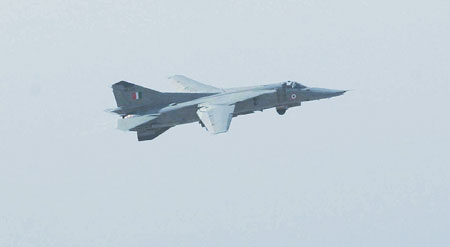INDIAN ARMED FORCES CHIEFS ON OUR RELENTLESS AND FOCUSED PUBLISHING EFFORTS

The insightful articles, inspiring narrations and analytical perspectives presented by the Editorial Team, establish an alluring connect with the reader. My compliments and best wishes to SP Guide Publications.

"Over the past 60 years, the growth of SP Guide Publications has mirrored the rising stature of Indian Navy. Its well-researched and informative magazines on Defence and Aerospace sector have served to shape an educated opinion of our military personnel, policy makers and the public alike. I wish SP's Publication team continued success, fair winds and following seas in all future endeavour!"

Since, its inception in 1964, SP Guide Publications has consistently demonstrated commitment to high-quality journalism in the aerospace and defence sectors, earning a well-deserved reputation as Asia's largest media house in this domain. I wish SP Guide Publications continued success in its pursuit of excellence.
Reminiscences - Farewell to MiG-23 BN

Ugaal, ugaal!—I heard the instruction in Russian as I had just unstuck for my first solo on the MiG-23 BN swing-wing aircraft at Lugovaya airbase in the erstwhile Soviet Union. January 19, 1982. I, along with a few other officers and technicians, were under training on the aircraft, which was then the latest addition to inventory of the Indian Air Force (IAF). This variable geometry aircraft would accelerate rapidly during take-off at 16-degrees of wing sweep position and if one was not conscious to climb away, speed limits of the yet to be retracted undercarriage could be exceeded. Hence, the direction to ugaal (angle), reminding the pilot to keep a steeper angle of climb after take-off.
March 2009, 29 years after its induction in the IAF, this powerful fighter aircraft piloted by Wing Commander Yogesh Joshi, Flight Commander of 221 Squadron, took to the sky for the last time. Around 11 am on March 6, my wife and I sat in a sombre mood at Halwara airbase to witness the Phasing-out Ceremony. Visibility was good, and what appeared to be just a speck in the distance, was soon a dart-shaped aircraft. For the last time MiG-23 BN was roaring past us at 72-degrees sweep, like an arrow. It then came in for a final run-in, escorted by two MiG-29 aircraft, subtly hinting at continuum. Switching-off in front of us, the pilot handed over the aircraft Form-700 to Chief of the Air Staff (CAS) Air Chief Marshal F.H. Major, who presided over the ceremony. After 28 years and having flown over 1,54,000 hours, an era had come to an end. The CAS spoke in glowing terms: Aeroplanes, like air warriors, can’t go on forever. While there is thunder and pride in their prime, they fade away with quiet dignity when the time comes.
The Mikoyan Gurevich-23 Bomber Navigation (MiG-23 BN) aircraft, optimised for ground attack role, was known as Vijay in the IAF and by the NATO codename of Flogger-F. This Third Generation single-seat aircraft had Type-3 variable sweep wing with three pre-set positions at 16, 45 or 72 degrees. Coincidently, General Dynamics F-111, which first flew in 1964, also had the variable sweep positions of 16 and 72.5 degrees. The Anglo-German Tornado which is still in service, however, has variable sweep positions of 25 and 67 degrees.
Most of the earlier designed Soviet combat aircraft required long runways for take-off and landings, which coupled with shorter ranges, limited their tactical use. The IAF had been operating MiG-21 and Su-7 (S-22) aircraft and was equally constrained by these limitations. A major design consideration, therefore, was to either fit Jet Boosters like those on Su-7, or develop a variable-geometry wing. The boosters not only added to the complexity of fitment but could help in overcoming only one limitation, that of reducing the takeoff distance. The MiG design bureau, therefore, preferred the latter option, as it not only provided shorter runs for takeoff and landings; but also gave added advantages of higher payloads, including 3x800 litre fuel drop tanks, resulting in longer reach. At the mid-sweep positions the aircraft had excellent agility and also a considerably higher speed of 1,350 kmph at low levels, to match any contemporary fighter aircraft of that era.





